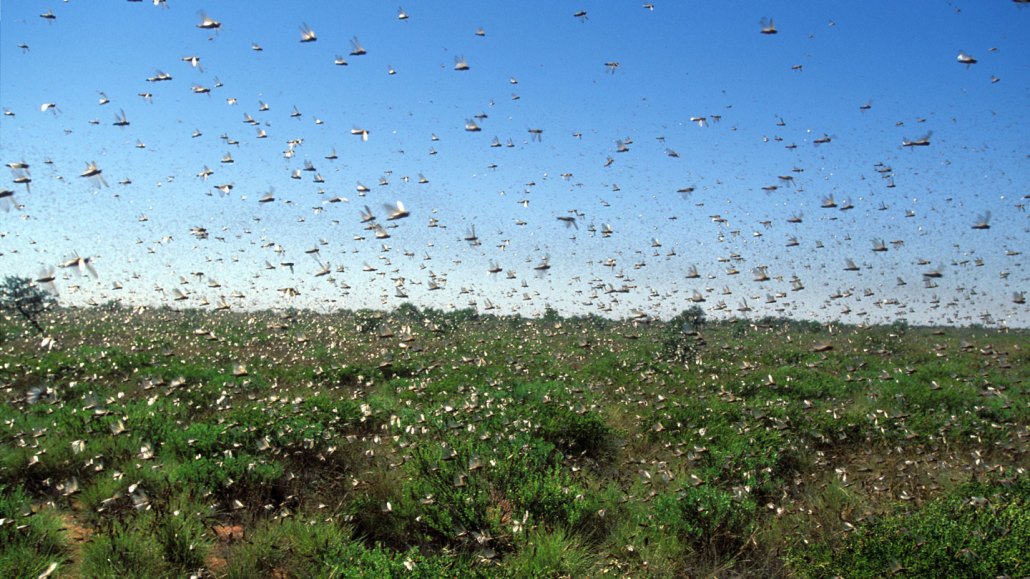Questions for ‘Insect swarms might electrify the air as much as storm clouds do’

Large locust swarms, like the one pictured here, might be able to produce as much electricity as a storm cloud.
John Carnemolla/Getty
Share this:
- Share via email (Opens in new window) Email
- Click to share on Facebook (Opens in new window) Facebook
- Click to share on X (Opens in new window) X
- Click to share on Pinterest (Opens in new window) Pinterest
- Click to share on Reddit (Opens in new window) Reddit
- Share to Google Classroom (Opens in new window) Google Classroom
- Click to print (Opens in new window) Print
To accompany ‘Insect swarms might electrify the air as much as storm clouds do’
SCIENCE
Before Reading:
- Describe what comes to mind when you think about static electricity. For instance, maybe you’ve felt static in your hair. Or perhaps you’ve experienced static with freshly laundered clothing. Describe one way an item of your choice may become charged with static electricity.
- What is a “swarm of insects”? Provide one example of an insect that forms swarms. What advantage do you think this species gets from this swarming behavior?
During Reading:
- How might flying insects in the air build up electrical charge?
- This story mentions how an electric charge in the atmosphere influences the formation of water droplets. According to this story, what other things might be influenced by electrical charge?
- Which insect species inspired Ellard Hunting to wonder how life forms might influence atmospheric electricity? Describe this “chance encounter.”
- Describe the relationship between the density of insect swarms and the atmosphere’s electrical charge. For example, as insect swarms become denser, what effect does this have on the atmosphere’s electrical charge?
- What desert insect did Hunting’s team study? What about these insects made the team want to investigate them in the context of atmospheric electricity?
- Even without wings, spiders might “soar kilometers above Earth.” Explain how they manage that feat.
After Reading:
- “There’s a lot of biology in the sky,” says Hunting. To what kind of “biology” is this scientist referring? Now consider the area in which you live. List some common life forms that inhabit your hometown. Of those that you listed, which would be most likely to influence atmospheric electrical charges? Explain your answer. Use findings or data from this story to support your answer.
- Describe how the air surrounding a dense city might differ from that of a sparsely populated or rural area. For example, what substances or chemicals might appear more in the city air versus the rural air? Or you might describe how the life forms would differ. Based on your description, develop a theory about how human activity may impact the atmosphere’s electrical charge. Briefly describe a follow-up experiment that could test your hypothesis.